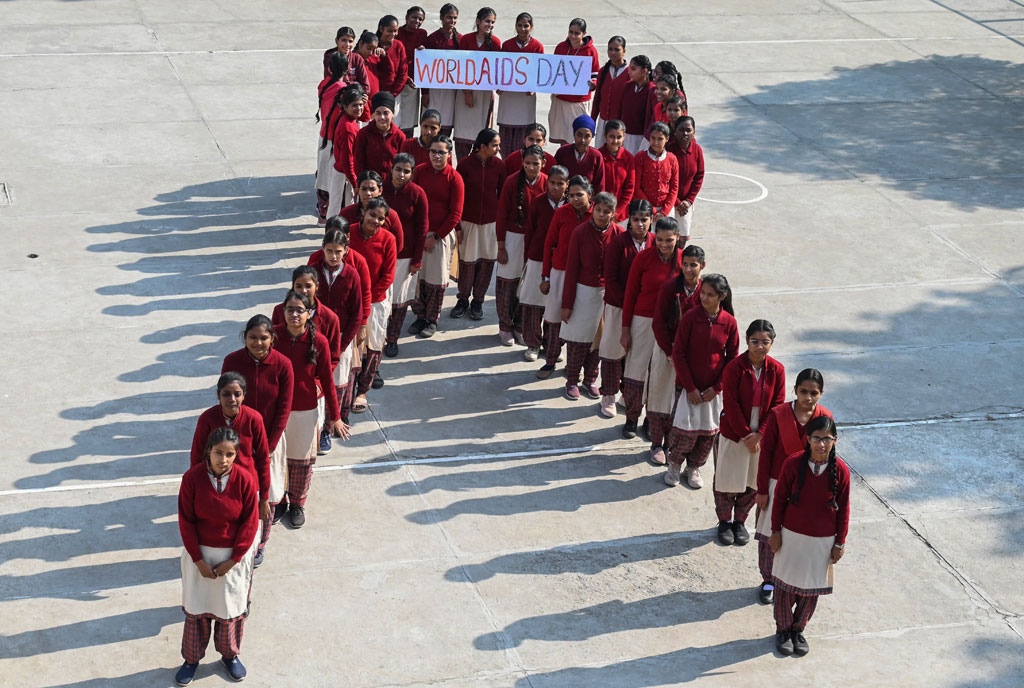Prime
40 years on, looking back at thehope buried in the tragedy of HIV/Aids

Author: Daniel K Kalinaki. PHOTO/FILE.
What you need to know:
- What is less acknowledged is the role of religious leaders who saved lives by putting aside their usual sanctimonious ways and embracing people affected by the disease.
It is now 40 years since the strange disease that was killing fishermen in Kasensero, a fishing village in Rakai on the shores of Lake Victoria, was confirmed to be Aids, the end-stage condition brought about by HIV. The carnage that would follow over the next two decades was astonishing. Entire families were wiped out and villages shorn of adults. Almost overnight, Uganda came to have the highest proportion of child-headed households in the entire world, and one of the biggest number of orphans.
It wasn’t just the number of those who died; it was how they died. The disease attacked with an unseen ferocity, taking patients into its vice-like grip and squeezing the life out of them. The new disease respected neither age nor status. Big men and women shrivelled and shrunk, just as thin peasants and nobodies.
Looking back now, there are a few stories in the burnt earth left by the epidemic. The first was that HIV/Aids produced a new set of civilian heroes. Uganda’s contemporary history between independence and the late 1980s had been dominated by military/political figures, mostly male.
The pandemic gave rise to a new breed of civilian heroes. Some, like the musician Philly Bongoley Lutaaya, and Bishop Misaeri Kawuma were already well known. Not so others like Norine Kaleeba, who helped co-found The Aids Support Organisation (TASO), the Irish Missionary Sr Miriam Duggan, Rev Gideon Byamugisha, or an army of medical workers, too many to name, who made strides in clinical or palliative care.
Much has been said about the role of celebrities like Lutaaya in pushing back against the stigma that stopped people from seeking treatment or caused them to be shunned. This was a key game-changer in rolling back the disease. What is less acknowledged is the role of religious leaders who saved lives by putting aside their usual sanctimonious ways and embracing people affected by the disease.
Apart from individuals, the pandemic also sprouted a mushroom field of grassroots institutions, of which TASO was only the most prominent. These filled very serious gaps in the public health infrastructure by offering everything, from home delivery of medicines, counselling or food, to educating orphans. In later years some would be set up for the sole purpose of separating donors from their money, and would create a mini economy out of the alphabet soup of NGO acronyms. But many, especially in the early days, made a huge difference.
Two unforeseen and unintended consequences of this, however, were positive in the short-term but have proven corrosive in the long run. First, the donor-funded programmes saved millions of lives, especially by providing anti-retroviral drugs, including those that allowed women with HIV to give birth to healthy babies.
At the time government was only giving ARVs to a privileged few, mostly military elite, out of the Joint Clinical Research Centre.
Apart from saving lives, however, this donor money pushed public money out of the public health sector and allowed government to abdicate its responsibility of spending money to keep its citizens alive. To this day, key segments of the health sector are donor-funded, with public officials nibbling at its edges. The second consequence was that the NGOs created employment in a post-war economy that was struggling under the weight of chronic bottlenecks, as well as the enforced retrenchment from the Structural Adjustment Programme. Again, entire families have been raised and educated off this NGO eco-system, but it also sucked middle-class people out of the public and civil service, as well as out of the arena of political agitation.
An entire generation of NGO workers learnt to keep quiet and focus on their workshops and mid-term evaluations, making sure not to ask too much of government. In fact, every government shortcoming was a proposal waiting to be written.
Bereft of some of its best brains, and comforted by the knowledge that NGOs would pop up to fill many gaps, the state atrophied into incompetence and inefficiency. On the other hand, many citizens who could have gone into government to change it from within, or who could have demanded for more, were too busy making a living in civil society.
Many lives would have been saved if we had the tools then that we have today. But 40 years on, it is clear that what HIV/Aids did not kill it did not necessarily make stronger. Some of the things it took from us we might never get back.
Mr Daniel Kalinaki is a journalist and poor man’s freedom fighter.
[email protected]; @Kalinaki




